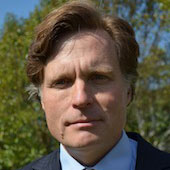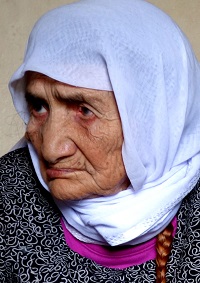Don’t Give Up on a United Ukraine
Divisions in Ukraine, while real, are often oversimplified.
February 12, 2014

The current Ukrainian conflict is typically viewed in stark East-West terms: a pro-Russian East versus a pro-European West, with the threat of Ukraine splitting down the middle.
Ukraine’s divisions are indeed pronounced and the forging of a coherent national identity has remained very much a work in progress since independence.
Nonetheless, far from pointing to its unraveling, polling indicates that support for the Ukrainian state has been on the rise over the past decade – even in the Russian-speaking East and South. This is true despite the often polarizing and dysfunctional policies of successive Ukrainian leaders.
The respected Razumkov Center conducted a poll in 2012, asking Ukrainians how they would vote on independence from the Soviet Union if they were to vote today – i.e., to redo the 1991 referendum. In 2012, the number of Ukrainians who said that they would vote in favor of an independence referendum reached 64.4%.
This is up from 51% in 2001, around the time Soviet nostalgia peaked. Those who answered that they would oppose independence, if given the chance to do it over now, were 17.7% in 2012 – down from 29% in 2001. Polling by the Kyiv Institute for Sociology in 2011 put the number who would vote for independence even higher – at 83%.
Pro-Russian sentiments linked to Soviet retirees
Meanwhile, a 2007 Razumkov poll found that 75% of respondents in the South and 78% of respondents in the East – both majority Russian-speaking areas – would not favor their region separating from Ukraine and joining another state.
Ukraine’s divisions, while real, are often oversimplified. Neither the East nor the West is monolithic. The pro-Russian East and South were part of the Russian Empire, but so was the pro-European Center. Kyiv and the Center are thoroughly bilingual, while in the West, the Ukrainian language predominates.
The most vocal pro-Russian sentiment comes from Southern areas such as Crimea – home to Russia’s Black Sea Fleet – and Odessa, both of which were favored retirement destinations for Soviet military and security officers. Identification with the Ukrainian state is much higher in Eastern cities such as Dniepropetrovsk and Kharkiv.
The electorate’s desire for good governance
A leadership that targets common concerns – such as anti-corruption and improving living standards – can resonate across the divide.
In the first round of the Presidential elections in 2010, for example, the vote totals of second-tier candidates Serhiy Tihipko, who hails from the East, and Arseniy Yatsenyuk, who hails from the West, were far more evenly distributed nationally than those of the polarizing figures of Yushchenko, Yanukovych and Tymoshenko.
Both Yatsenyuk and Tihipko focused more on governance issues that appeal to the younger generation.
President Putin’s reputed comment that Ukraine is not a country is a view not shared by most Ukrainians. It would be a tragedy if Yanukovych’s whipsawing on the EU Association Agreement were to result in an irreparable rift that the vast majority of Ukrainians – East and West – do not want.
Editor’s note: The views expressed are those of the author and do not necessarily reflect the views of the Department of State.
Takeaways
Ukraine’s divisions are often oversimplified. Neither the East nor the West is monolithic.
Ukraine’s loudest pro-Russian sentiment comes from Crimea - home to Russia’s Black Sea Fleet and ex-Soviet officers.
President Putin’s reputed comment that Ukraine is not a country is a view not shared by most Ukrainians.

